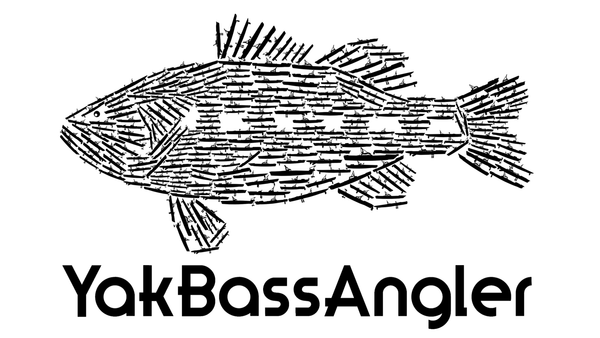Kayak fishing offers a unique and exciting way to experience the water, but safety should always come first. One of the most important pieces of safety gear you can wear is a personal flotation device (PFD). Whether you’re a seasoned angler or a beginner, a well-fitted PFD can make all the difference in ensuring your safety and visibility while on the water.
State laws regarding PFD use vary, but many require them for kayakers. For example, in California, a PFD is required by law for kayaks less than 16' in length. Similarly, states like Florida and Texas mandate that PFDs must be worn or at least readily accessible while kayaking. Always check local regulations before heading out on the water to ensure compliance and stay safe.
Safety in Case of Capsizing
No matter how experienced you are, there’s always a chance of flipping your kayak. Strong currents, unexpected waves, or even a sudden shift in weight can send you into the water. A PFD provides the buoyancy needed to keep you afloat, giving you the time and confidence to right your kayak or signal for help. Without a PFD, even strong swimmers can struggle in cold water or rough conditions, increasing the risk of exhaustion and drowning. Make sure you wear a Coast Guard-approved PFD, which meets safety standards for flotation and durability. To verify if a PFD is Coast Guard approved, check the label inside the vest, where it will be marked with a U.S. Coast Guard approval number. PFDs are also classified into five types based on their intended use and level of buoyancy:
-
Type I: Offshore life jackets designed for open water, providing the highest buoyancy and turning most unconscious wearers face-up.
-
Type II: Near-shore buoyant vests suitable for calm waters where quick rescue is likely; they offer less buoyancy than Type I.
-
Type III: Flotation aids designed for conscious users in inland waters, offering comfort and freedom of movement, making them popular for kayaking.
-
Type IV: Throwable devices like rings or cushions, meant to be tossed to a person in distress rather than worn.
-
Type V: Special-use PFDs tailored for specific activities, such as rafting, often incorporating extra pockets and attachment points. Some Type V PFDs also have auto-inflation devices (e.g. CO2 cartridges) when in contact with water.
For kayak fishing, a Type III PFD will satisfy most kayak fishing needs. And Type V PFDs that have auto-inflation sensors are typically not recommended because kayak angler sit close to the water and splashes of water from a big wave could trigger the auto-inflation. Additionally, ensure the PFD is suitable for your weight and intended activity, as different types are designed for various water conditions and uses.
Choosing a PFD Specifically Designed for Kayak Fishing
Not all PFDs are created equal, and for kayak fishing, it’s essential to choose one designed specifically for the sport. Kayak fishing PFDs feature a high-back design that sits comfortably above your kayak seat, preventing discomfort and allowing for full mobility while paddling and casting. They also often include multiple pockets and attachment points for fishing gear, making them both functional and safe.
Visibility for Rescue and Boaters
A PFD isn't just about flotation—it also makes you more visible on the water. Many fishing PFDs come in bright colors or feature reflective materials, making it easier for rescuers or passing boats to spot you. If you capsize or become separated from your kayak, being highly visible can significantly reduce rescue time, potentially saving your life. Additionally, boaters moving at high speeds may have difficulty seeing a low-profile fishing kayak, so a bright PFD helps prevent accidents before they happen.

PFDs are NOT Dry Suits
Its important to note that PFDs and dry suits serve very different purposes. While a PFD provides buoyancy to keep you afloat in the water, it does not offer thermal protection. Dry suits, on the other hand, are designed to keep water out and help maintain body heat, reducing the risk of hypothermia in cold conditions. Kayak anglers fishing in colder waters should consider wearing a dry suit in addition to a PFD for complete safety. While a dry suit may not be needed every time you're on the water, a PFD is absolutely required.
Make Safety a Priority
Wearing a PFD should be a non-negotiable part of your kayak fishing routine. It’s a simple step that can mean the difference between a minor mishap and a life-threatening emergency. By choosing a PFD designed for kayak fishing, you ensure both safety and comfort, allowing you to focus on what you love—catching fish and enjoying the great outdoors. It is also important to read and follow all the instructions that come with your specific PFDs. Proper tensioning of the straps, clips, and inspection for wear and tear is essential to ensure the PFDs provides you the proper protection.
Remember that a PFD doesn't take the place of common sense. Always check the weather forecast before heading out, and avoid kayaking in high winds, storms, or strong currents. Additionally, inform someone of your plans and carry essential safety gear like a whistle, a marine radio, and a safety whistle to stay prepared for unexpected situations.
So, before you head out on your next kayak fishing adventure, make sure your PFD is securely fastened and ready to keep you safe. Tight lines and stay safe on the water!


